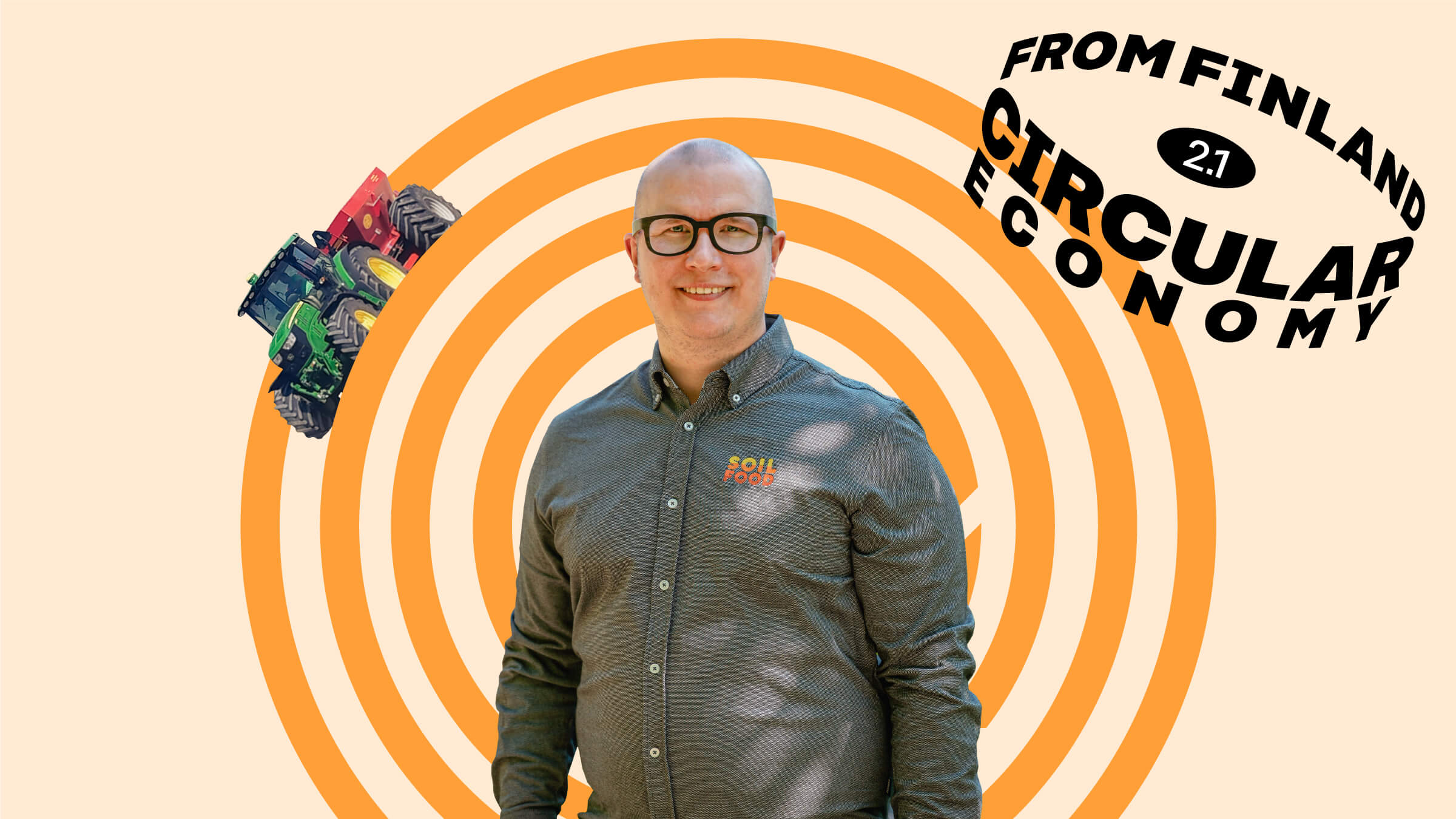“I had an idea about using side streams when I was working at some of the largest dairy farms in Finland. I noticed how much manure is generated as a by-product on a dairy farm. Manure contains nutrients, but it is too weak to be a good fertiliser as such. Soilfood offers products that can be used to increase or balance the nutrient content of manure and this way process it into a better fertiliser. We have now introduced the same idea to using and processing industrial side streams.
Soilfood makes use of the fibre-rich and nutrient-rich side streams created in industrial production. We investigate and analyse the fibre-rich and nutrient-rich side streams in different industrial sectors and find out whether they are suitable as raw material for fertilisers or soil improvers.
At the moment, we use side streams from the forest, food, bio and chemical industries. For example, we use the side streams created in the processing of potatoes, sugar beets and sugars and the slurries of the forestry industry, which bind carbon and nutrients to the field. We already receive side streams from approximately 50 factories in Finland, Sweden and Estonia.
Before this, industrial side streams were incinerated or taken to landfills. This is what still happens to the majority of industrial side streams. The incineration of side streams creates carbon dioxide emissions. At the same time, we lose good nutrients that could be used in the fertilisation of fields instead of fossil nutrients.
Soilfood processes side streams into soil improvement fibres that it sells on to farmers. The fibres bind carbon, disintegrate slowly, improve the growing condition of the field and improve the harvest. In 2020, our operation reduced 24,000 tonnes of carbon dioxide, which corresponds to the annual carbon dioxide emissions of 2,300 Finnish people.
We have recently started to sell the carbon sinks created in fields in the emissions trading system. When the carbon contained in the side streams is bound to the field, a carbon sink is created. The carbon sinks created by using soil improvement fibres are verified by a neutral party and sold at the Puro.earth marketplace to another company for the compensation of emissions.
The revenue from the emissions trading is shared equally between us, the farmer and the industrial operator that delivered the side stream to us. Industry, farmers and the environment all win with this model.
We have learned a lot since the founding of the company. In the beginning, people questioned the idea, but now they understand the benefits of the operating model and farmers have adopted the activity very well. The soil improvement fibre is already used on approximately 200 farms and we have a total of 1,500 agricultural customers.
This is a complex business as there are many kinds of industrial side streams and their quality and quantity vary. Our profitability is based on identifying the different side streams that can be used and on cost-efficient processing. Last year, we made the first clearly profitable result and our future looks good.”










Suosittelemme
Vielä yksi